Staying protected from the elements is easy when you know how to layer your clothing correctly. To help you out, we've put together a handy guide on the three essential layers, when to wear them, and which materials will work best for you. Give it a read and you'll be all set for your next outdoor adventure!
Note: When exercising for long periods of time, or exploring remote outdoor environments where the weather can change suddenly, do not wear cotton. When cotton becomes wet - either from sweat or unexpected rain - it becomes heavy and does not keep you warm.
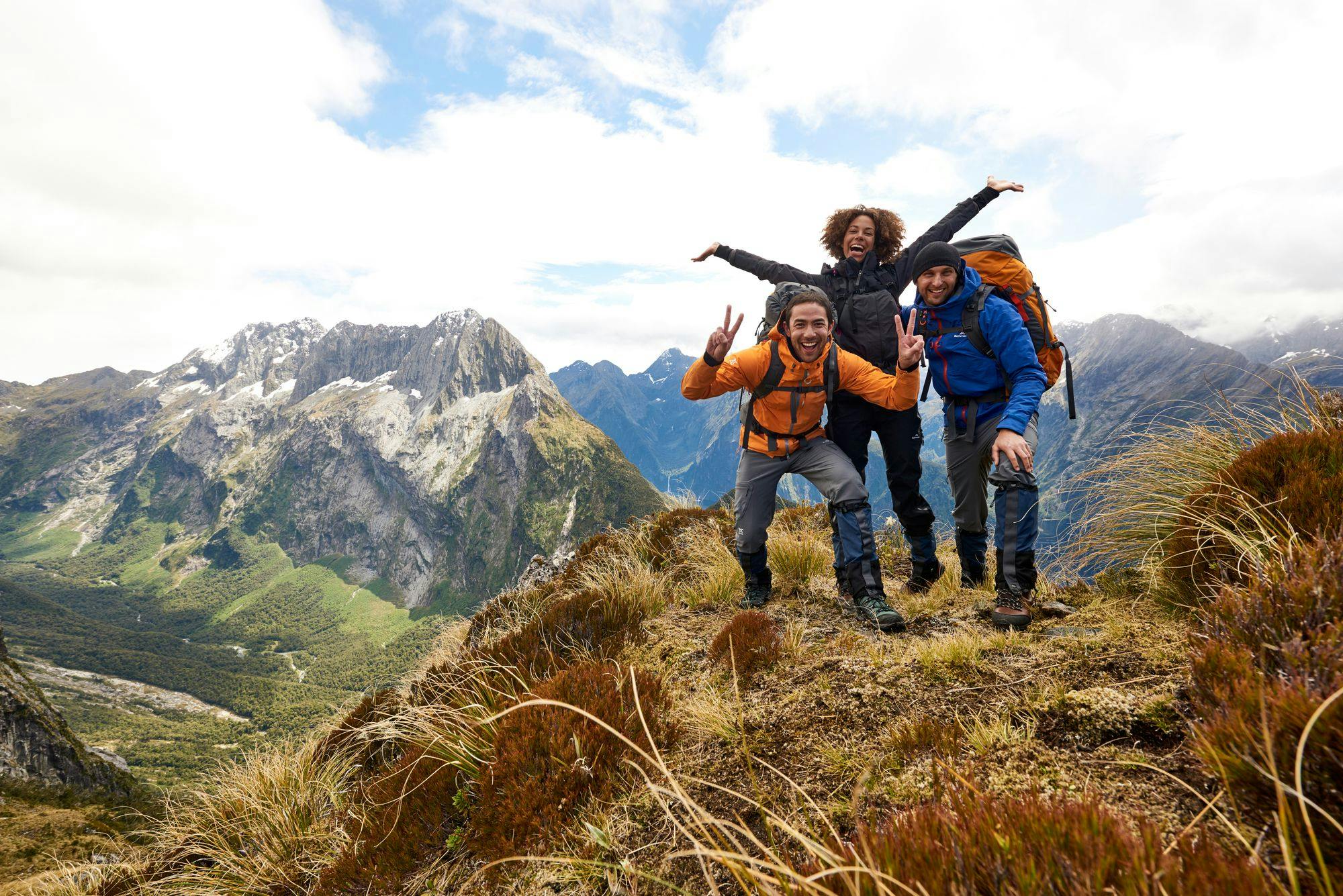
Layering your clothes
- Base layer clothing is closest to your skin, which means its main role is managing moisture and regulating your temperature.
- Mid layer clothing's purpose is to keep you warm, without you overheating. This means it needs to be highly breathable, lightweight and quick-drying.
- Outer layer clothing shields you from elements like wind, rain and snow, and needs to be waterproof.
Once you have all three, simply mix and match the layers to suit the conditions.
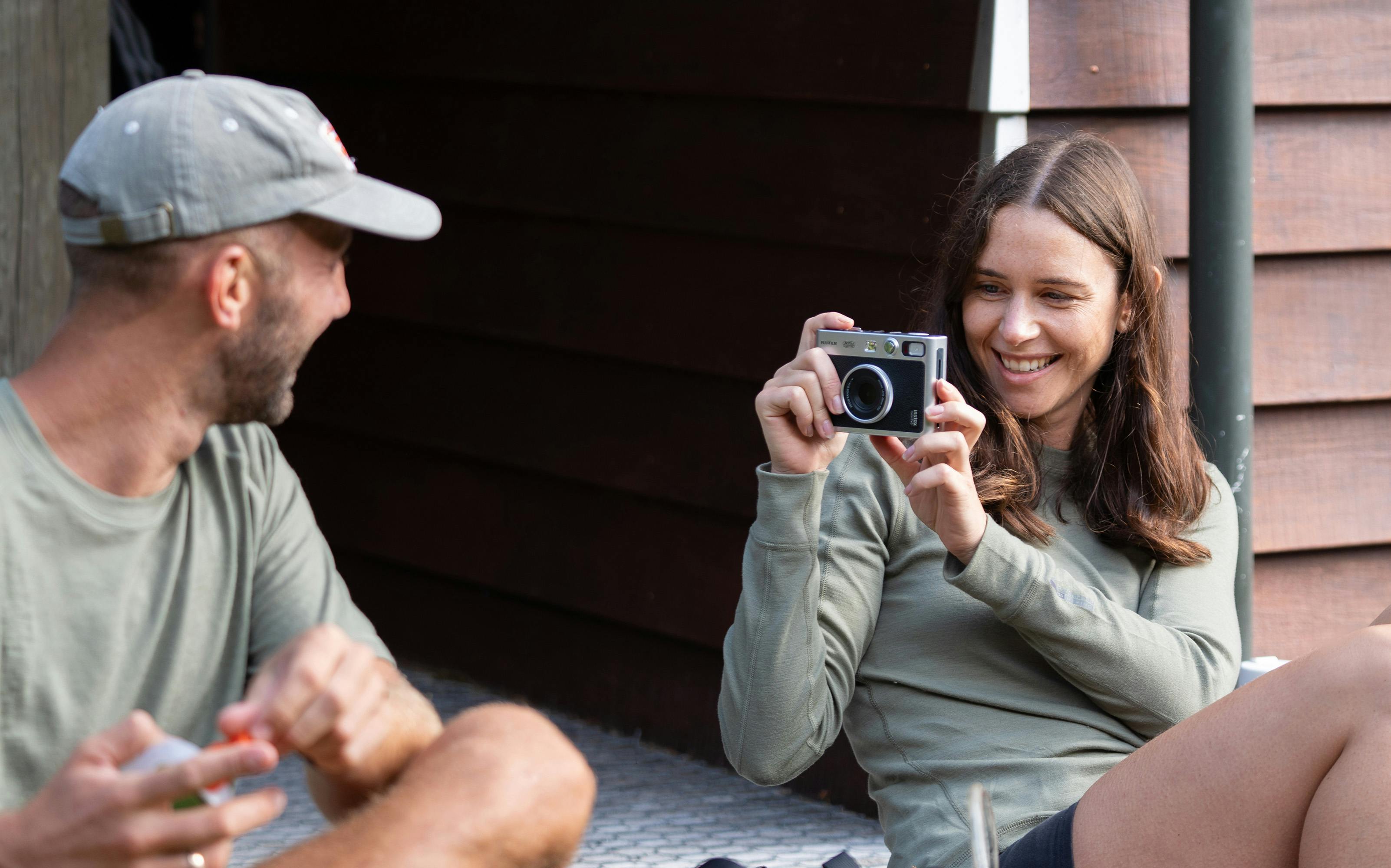
Base layers
A good baselayer should either be merino wool or polypropylene, as they are warm, breathable, quick-drying, and wick moisture away. What really sets a good base layer apart is its breathability – it's able to release warmth as needed to prevent overheating, and it keeps you cool when conditions heat up. Arguably, the most important reason to choose wool or polypropylene for outdoor pursuits is that they still keep you warm even when wet from sweat or unexpected rain.
Luckily, when it comes to merino and polypropylene base layers we’ve got you covered. For really hot conditions or shorter trails, you can opt for quick-drying polyester t-shirts and shorts instead.

Mid layers
Puffer jackets with feather down or synthetic down make great mid layers if you need to stay warm when chilling at a campsite, cheering on the sidelines of winter sport, or walking around town. However, puffer jackets are not recommended for exercising in. Puffer jackets don't wick away moisture, and will not serve you well if you sweat in them.
Fabrics like wool and synthetic fleece are perfect all-round mid layers, and have the added bonus of being highly breathable, lightweight, and moisture-wicking. Wool and fleece also have a great warmth-to-weight ratio, and provide comfort without feeling too heavy, or taking up too much space in your pack.
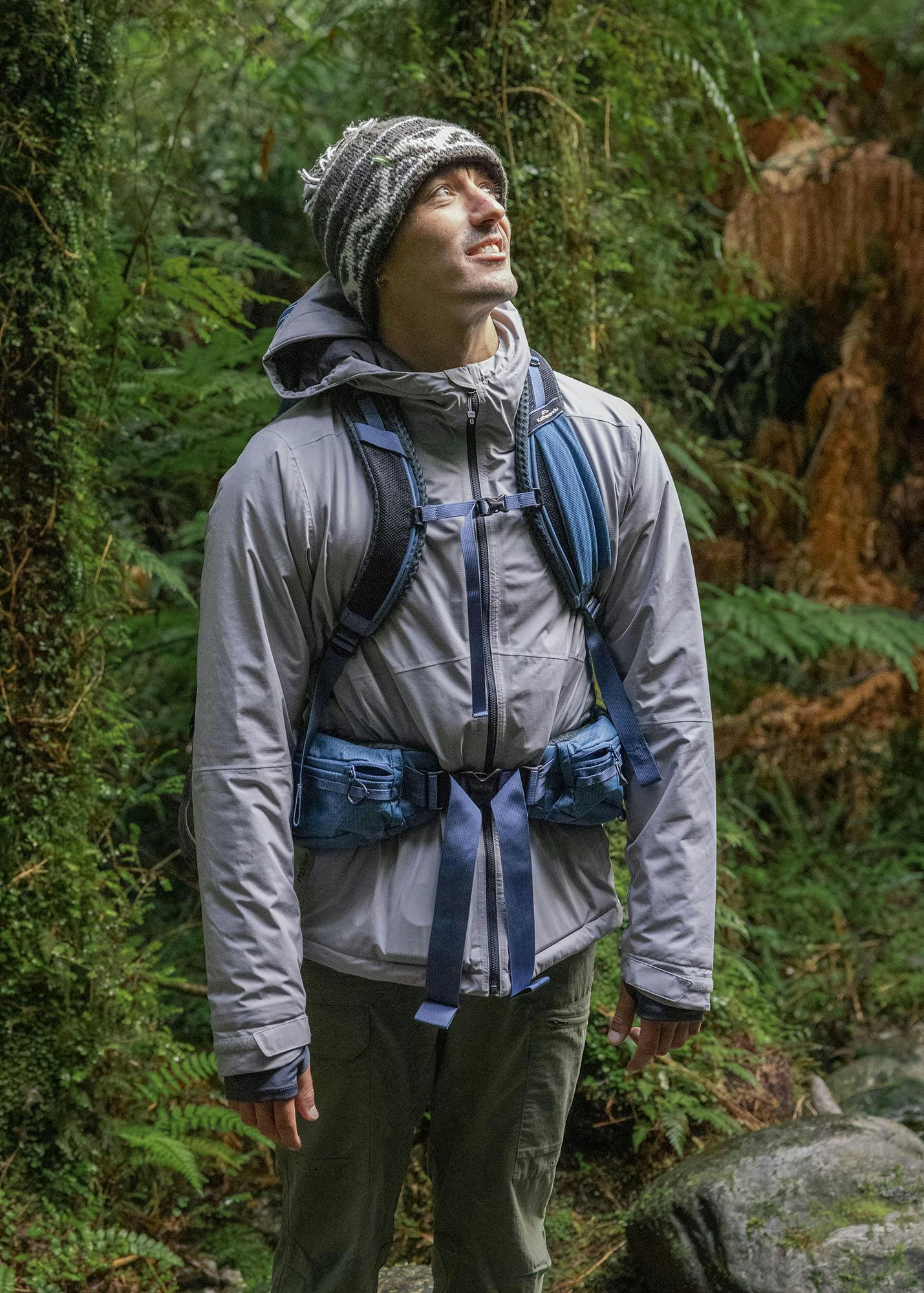
Outer layers
Softshell jackets can perform as either mid or outer layers.
They’re relatively lightweight, breathable, and can offer you short-term protection against wind and light rain.
Windbreakers are remarkably lightweight and packable. They're aptly named, too: they act as a barrier between your skin and the cold breeze, which traps your body heat.
Our windbreakers are also water resistant, which means they can protect you from drizzle during short outings.
Waterproof rain jackets are essential for longer walks or unpredictable weather, and are an investment you won't regret.
The best outer-shell options are made from durable, waterproof and windproof fabrics, such as NGX, GORE-TEX, or Pertex.
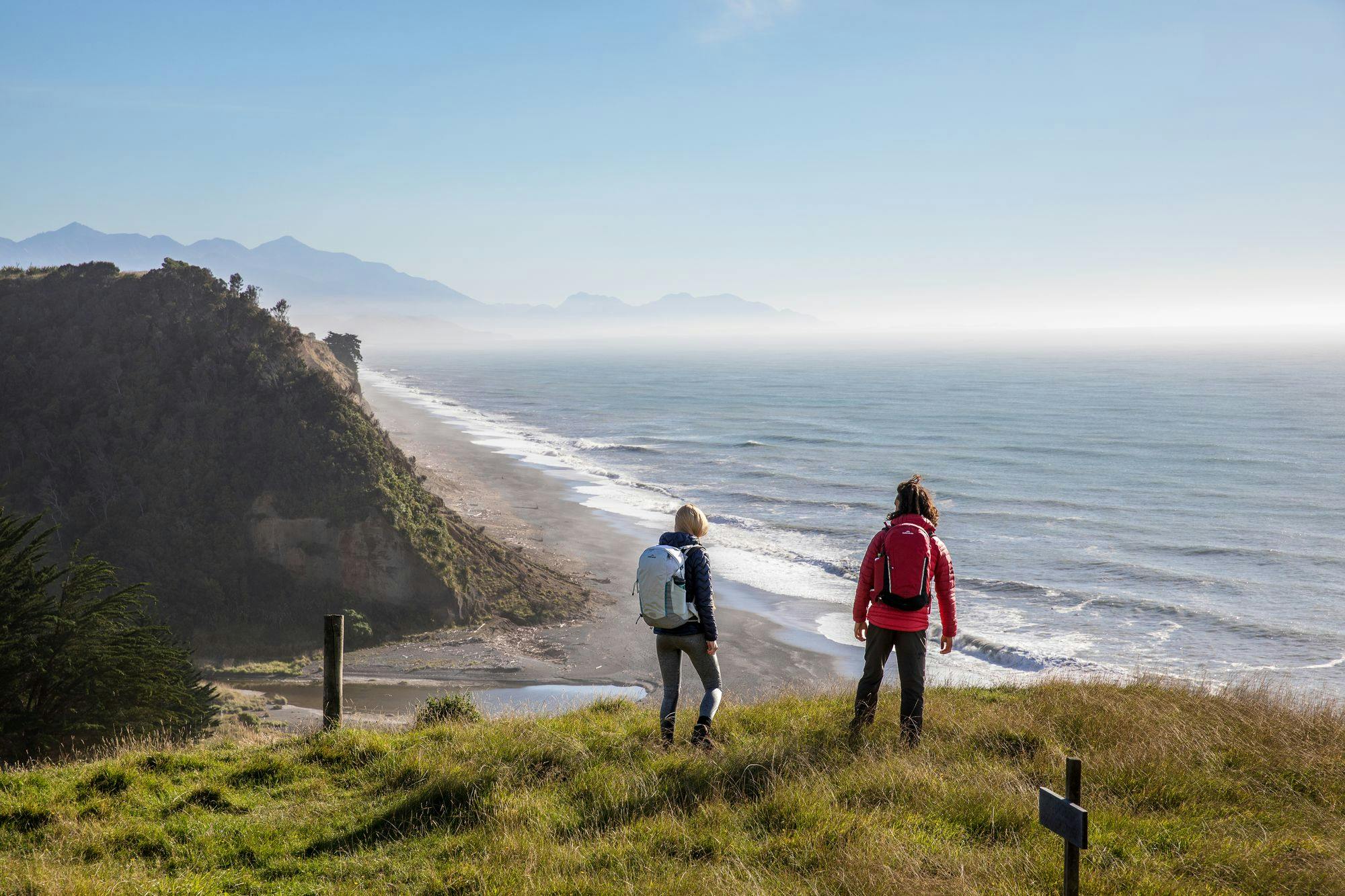
Lower Layers
Comfort is key for lower layers. Shorts are great because they dry quickly and aren't likely to get too muddy or wet if you're crossing streams, but they're not as warm. Lycra leggings have become popular in recent years for their added warmth, while still being stretchy and quickdrying. Nowadays, hiking pants have evolved to be the best of both worlds. For the coldest or wettest days, we suggest thermal leggings with waterproof pants over top or our EVRY-Day lined cargo pants.
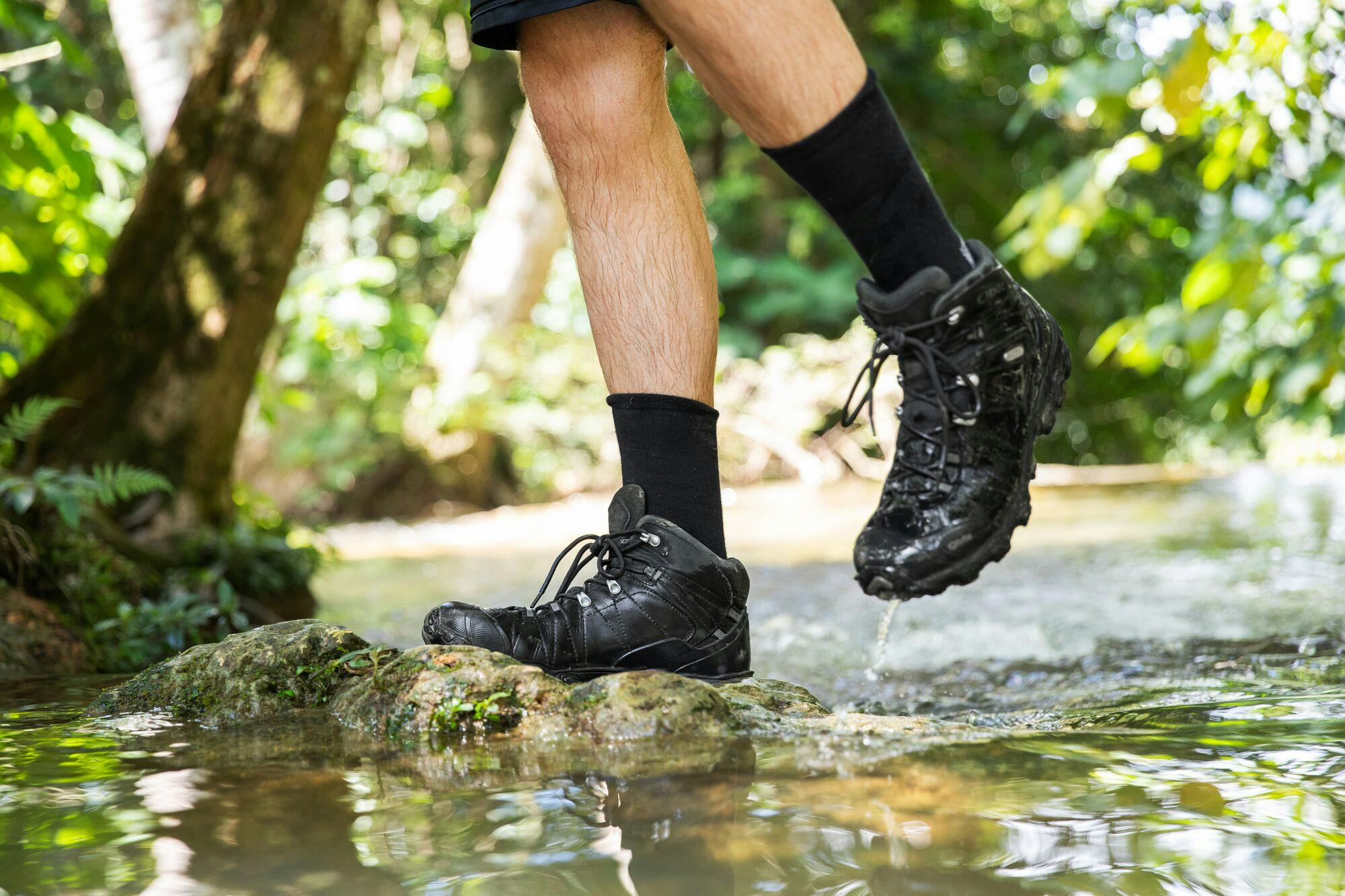
Footwear
Proper hiking footwear is key to an enjoyable hiking experience, no matter if it's a casual park stroll or a challenging mountain ascent. The right shoes or boots can offer support, comfort, and protection for your feet, allowing you to tackle various terrains with ease and without risking blisters or injuries. And let's not forget the importance of hiking socks!
Designed to provide extra cushioning, moisture-wicking, and protection for your feet, they are a must-have for any hiker. Look for materials like wool, nylon, elastane, and polyester to ensure both comfort and durability on the trails.
Check out our comparison guides to find the best fit for you.

Accessories
A beanie/balaclava, a scarf/neck gaiter and a pair of gloves are must-haves in case the temperature drops. They not only keep you warm and cosy but also protect key areas of heat loss like your head, neck and hands. Plus, they act as a shield against the wind and other harsh elements.
So, don't forget to grab some before heading out on your next adventure!






